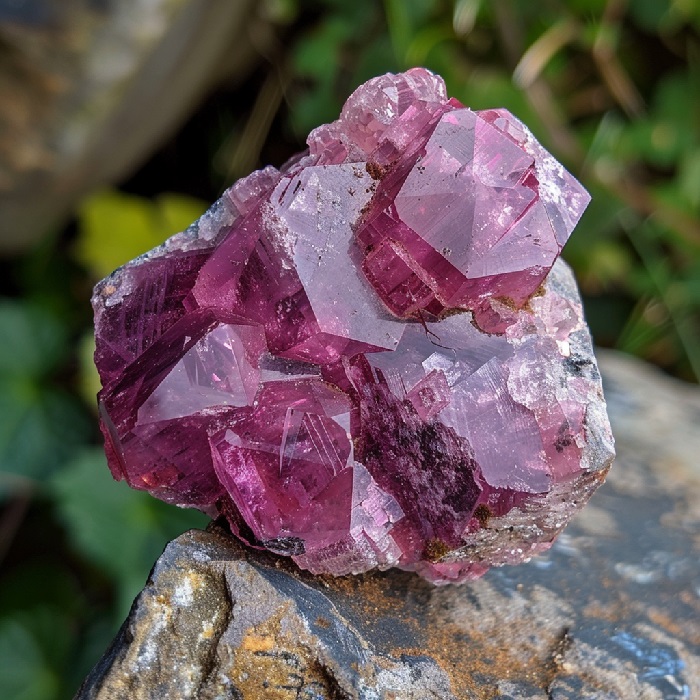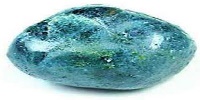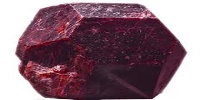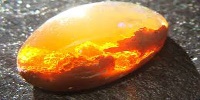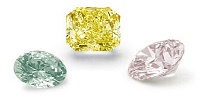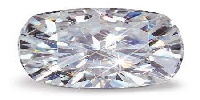SPINEL MINING
DESCRIPTION:
Spinels are a class of minerals with the general chemical formula A2+B23+O42-. They crystallize in the cubic (isometric) crystal system, where oxide anions are arranged in a cubic close-packed lattice. The cations A and B occupy some or all of the octahedral and tetrahedral sites within this lattice. A and B can be divalent, trivalent, or quadrivalent cations, including magnesium, zinc, iron, manganese, aluminium, chromium, titanium, and silicon. While oxide is the typical anion, structures are also known for other chalcogenides.
MINING:
The first step in spinel mining is the exploration phase, during which geologists and other specialists study the area to determine the size and quality of the deposit. This includes analyzing the rock types, structures, and mineral content of the area. Various geophysical methods such as seismic surveys, gravity surveys, and magnetic surveys are employed to ascertain the size and shape of the deposit.
Once the area has been explored and the size and quality of the deposit established, the next step is to prepare the site for mining. This involves removing any overburden (soil and rocks on top of the deposit), setting up access roads, and constructing a mining camp.
The actual mining process starts with drilling and blasting to break up the rock. Subsequently, the ore is extracted using either open-pit or underground mining methods. In open-pit mining, the ore is removed from the surface, while in underground mining, tunnels are dug to access the ore. The extracted ore is then transported to the surface for processing.
WHERE DO THEY FORM SPINEL :
Spinel mining involves extracting the gemstone spinel from the earth. Spinel, a hard and crystalline mineral, is typically found in igneous rocks like basalt, gabbro, and peridotite, as well as in metamorphic rocks such as marble, schist, and serpentinite. Composed of magnesium aluminum oxide, spinel occurs in various colors such as red, blue, green, yellow, and black. The mining process for spinel is intricate and requires specialized equipment and expertise. Initially, geological surveys, aerial surveys, and ground sampling are conducted to identify potential spinel deposits. Once a promising site is located, obtaining a mining license is necessary before the extraction of spinel can commence.
PHYSICAL PROPERTIES:
Its hardness is 8, its specific gravity ranges from 3.4 to 4.1, and it ranges from transparent to opaque with a vitreous to dull luster. Spinels may be colorless, but they are usually found in various shades of red, green, blue, yellow, brown, or black. Some spinels are among the most famous gemstones, such as the Black Prince's Ruby and the 'Timur ruby' in the British Crown Jewels, as well as the 'cote de Bretagne' formerly from the French Crown jewels. The Samarian Spinel is the largest known spinel in the world, weighing 500 carats (100 g). Transparent red spinels were historically referred to as spinel-rubies or balas-rubies. Before modern scientific classification, both spinels and rubies were often referred to simply as rubies. However, from the 18th century onwards, the term "ruby" was specifically reserved for the red gem variety of the mineral corundum, while "spinel" became the accepted term for this particular gemstone.
The ancient name for Badakhshan, a region in Central Asia situated in the upper valley of the Kokcha River, one of the principal tributaries of the Oxus River, was synonymous with spinel production for centuries. Badakshan province was renowned as the primary source for red and pink spinels.
NATURAL OCCURRENCE:
Sri Lanka, Thailand, Burma and Afghanistan.
AVAILABLE COLORS:
Red,pink, violet, blue, green, aqua, orange, yellow, brown, and black. Rarely white or colorless.
